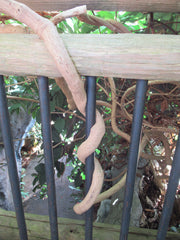What impressions of plants are we giving? Part 3. Stems and leaves August 12 2019, 0 Comments
When we use the botany impressionistic charts to introduce children to plants, are we giving them correct information and the important ideas for them to know? That is the question I’ve been asking in this series. I’d like to call the charts “An overview of how plants work” or perhaps “Imagine how plants work." In English, the term “impressionistic” can imply that the material is hazy and unclear.
Several of these charts show people doing things to illustrate what the plant accomplishes. For instance, little men are shown anchoring roots like tent stakes. While some of this may help children understand plants, I find the real plant characteristics and real plant structures wonderful and inspiring as they are.
What do the traditional charts say about stems? One chart says that some stems are weak, and so they have to grow some structure to help them climb to reach the sunlight. This one has always driven me nuts. Nature doesn’t make weak organisms; natural selection acts against the poorly adapted. There is a better way to look at stems that climb. They have adaptations that allow them to grow upwards but don’t require them to develop a thick, rigid stem. Some kinds of vines have flexible woody stems. They are called lianas and they include grape vines and cat’s brier (Smilax). Lianas are common in tropical forests, and their stems certainly shouldn’t be called weak, as the photo shows.
The chart on stems that climb could also show children that plants do many things with their stems beyond the usual connecting roots and leaves. Stem adaptations include food storage (kohlrabi, potato) and water storage (cacti, other succulents). Two quite different looking specialized stems help grow new plants. Corms are short, thick stems that store food and propagate the plant (gladiolus, banana). Without corms, we wouldn’t have bananas to eat because the domestic bananas are seedless. Runners are greatly elongated stems that enable the plant spread its offspring across the ground (strawberries). Thorns are short, pointed stems that discourage herbivores (hawthorn). Climbing roots, twining petioles, twining stems, and tendrils represent many ways that plants can fulfill their need to reach the sunlight.
The traditional botany charts include a depiction of photosynthesis in the leaf. Please make sure that you are giving children accurate ideas about photosynthesis. Hint: If your “chemical factory in the leaf” chart shows carbon monoxide being formed, it is giving false information. Why should we ask children to imagine false ideas when we can give them steps in the real process? The process of photosynthesis has quite a lot of details, and it must be greatly simplified for children, but if we are going to give them an idea of what goes on, it should be a valid framework to which they can add details later.
The “chemical factory in the leaf” should show that sunlight is used to break apart water molecules. It is the chlorophyll molecules that capture the Sun’s energy. The sunshine-requiring “light reactions” produce hydrogen ions and oxygen molecules. (They also produce high energy electrons and energy-rich molecules (ATP), but that is more chemistry than beginners need.) The hydrogen is joined to a carrier molecule, moved to a different area, and combined with small, carbon-containing molecules that have had a carbon dioxide attached. A series of reactions produces sugar. Most charts simply show the hydrogen and carbon dioxide entering a structure of some sort and sugar coming out. That is likely to be enough information for the beginner.
Check the depiction of carbon dioxide on your charts. It is a linear molecule. There is a carbon in the center with an oxygen on either side. The oxygens are directly opposite one another – 180 degrees apart. It isn’t like water, which is v-shaped.
I’ve seen charts that show the sugars from photosynthesis being combined into starch, which does happen in plants. A little bit of starch is made in the chloroplast, and it acts as fuel during the nighttime. Starch, however, is NOT transported through the plant’s phloem. Starch is too big to go into solution. The transportable product of photosynthesis is the sugar sucrose (table sugar). The sucrose travels to leaves, stems, and roots, where it is converted to starch, which stores the chemical energy until it is needed. Sucrose is made from two 6-carbon sugars, so there is some processing of the product of photosynthesis before it is transported.
And then there is the chart that shows leaves worshiping the Sun. Do we worship the food on our plates? No, although a healthy serving of appreciation for the food that sustains us is a good thing. The real leaf story is so much more interesting. We can help children imagine how a plant positions its leaves and appreciate beautiful leaf arrangements. As for the leaves, they are arranging themselves to get maximum sun but minimum damage. Sunlight comes with heat, and leaves take action to avoid getting cooked. A leaf in the shade may be oriented horizontally. In full sunlight, the same species may turn its leaves on edge to protect them from heat. In deserts, many plants orient their leaves to catch less of the Sun’s hot rays.
I’ve always found much in nature that is inspiring and remarkable, and that’s without turning plants into people. When we learn about a natural phenomenon, there always seems to be more of the story. This alone can be inspiring to children. We can let them know that there is much more to the story of plants and how they work than we show on the botany charts.


